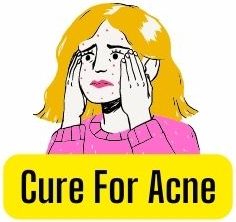
This topical cream for acne can be quite effective in treating various skin conditions, from psoriasis to eczema. A dermatologist can recommend the proper protocol for treating your condition. You can learn more about the benefits and side effects of Triamcinolone acetonide by reading the following article. We hope you find this information helpful.
Treatment of psoriasis
Topical corticosteroids and emollients are commonly used to treat psoriasis. Other treatment options include vitamin D analogs, tar, or retinoids. Depending on the patient’s disease severity and comorbidities, other therapies include pimecrolimus and tacrolimus for the facial region or intertriginous areas. Patients with refractory disease may also benefit from localized phototherapy.
Topical psoriasis treatment should be consistent with treatment goals. In clinical trials, psoriasis patients have reported better results with triamcinolone acetonide cream when compared to the control group. A recent study of patients with psoriasis found that the combination of hydrocolloid dressing occlusion and triamcinolone acetonide cream produced a greater response than hydrocolloid occlusion alone. Moreover, the effects were comparable between plastic film occlusion and hydrocolloid occlusion.
A large number of patients undergoing triamcinolone acetonides had adverse reactions to the drug. A study published in the N Engl J Med analyzed 12095 cases. Nevertheless, some patients experienced severe reactions and experienced infections. Despite the adverse effects of triamcinolone acetonide cream, many patients reported positive responses.
Tazazorotene is another topical retinoid, available as 0.05% and 0.1% ointments, was safe in two randomized vehicle-controlled trials. In the 0.1% ointment group, the higher percentage of patients achieving excellent improvements compared with placebo. Overall, the 0.1% ointment was better tolerated than 0.05% fluocinonide.
Both cyclosporine and methotrexate are considered effective in treating psoriasis. However, there are a few risks associated with both drugs. For example, methotrexate has been linked with hepatotoxicity and may be less effective for severe psoriasis. It should also be noted that patients should continue to monitor their condition closely during treatment.
Calcipotriol is another effective psoriasis treatment. This drug inhibits the hyperproliferative keratinocytes in the psoriatic epidermis without affecting the antigen-presenting cells. Calcipotriol has an anti-inflammatory effect, which is similar to calcipotriene.
In addition to Triamcinolone acetonide, patients may also benefit from the use of Tapinarof, a topical aryl hydrocarbon receptor modulator, which may help normalize the skin barrier and have antioxidant effects. Researchers in two identical phase III trials studied Tapinarof’s efficacy in psoriasis in 1025 adults.
The PSOLAR registry offers reassurance for those taking biologic therapies for psoriasis. Infliximab, etanercept, and infliximab pegol were all equally effective treatments for plaque-type psoriasis. These three biologics are not known to cause significant side effects in patients, although the results of studies conducted on these therapies are not conclusive.
In addition to Triamcinolone acetonide, glucagon-like peptide-1 analogs (glucagon) are also effective for psoriasis. Glucagon-like peptide-1 analogs, meanwhile, promote modest improvements in psoriasis. In addition, topical Crisaborole, a phosphodiesterase-4 inhibitor, has been associated with improvement in patients with facial, intertriginous, and palmoplantar psoriasis.
Aside from topical creams and ointments, Triamcinolone acetonide is also available as nasal sprays, dental paste, and injections. It works by controlling inflammation and calming the overactive immune system. Triamcinolone is a prescription medicine, so it should be used only under the supervision of a physician.
While topical retinoids can help reduce the symptoms of psoriasis, they should not be used for other skin conditions. In addition to being effective only on skin-related conditions, topical retinoids should not be applied to face, groin, or underarm skin. Topical bactrim should be applied to the affected area twice a day in a thin layer.
Triamcinolone acetonide can be applied on the skin in two to four applications a day. To reduce skin sensitivity, triamcinolone acetonide cream should be used sparingly. Generally, triamcinolone should be applied twice a day, in the morning and evening. The cream should not be covered or kept off from the eyes.
Treatment of eczema
The Triamcinolone Acetonide (TCI) cream is a prescription medication used for the treatment of atopic dermatitis. The cream comes in various concentrations and is approved for the treatment of mild to moderate atopic dermatitis in both adults and children. This medication also has generic equivalents. It works by preventing immune system cells from “switching on” and thus, controlling symptoms of eczema.
It is an effective topical solution for treating most types of rashes. Triamcinolone is a medium-potency steroid and is considered an appropriate first-line treatment for eczema. Among 132 eczema medications, this is the most commonly used one, which is why the American Academy of Dermatology has recommended it for use as a first-line treatment. However, it is important to note that the reviews on this website are not intended to endorse any specific brand of medication. They are simply intended to assist patients in choosing the medication that is appropriate for their unique condition.
Triamcinolone Acetonide Cream contains one milligram of Triamcinolone Acetonide in a cream base. Other ingredients in the cream include cetyl alcohol, glyceryl monostearate, cetyl esters wax, polysorbate 60 and 80, and purified water. The Triamcinolone Acetonide cream for treatment of eczema is recommended for patients who are experiencing recurrent flare-ups or need to prevent the symptoms from recurring.
A topical solution of Triamcinolone should be applied on the affected area twice a day or as directed by a healthcare provider. The amount of cream to apply is based on the size of the affected area. It should not be applied to large areas because excessive application could cause a side effect. Always wash the affected area thoroughly before applying the cream.
The Triamcinolone Acetonide gel is a good alternative to oral steroid medication. This medicine is widely used in the treatment of eczema. It works by reducing the inflammation caused by dermatoses. The only downside to the medication is that it can cause side effects and can cause irritation and even rash. Although Triamcinolone Acetonide is safe and effective, you should never use it on any part of the body if you have another skin problem.
The cream also has other uses. Triamcinolone is used to treat various skin conditions, such as psoriasis and eczema. Triamcinolone works by activating natural substances in the skin and calming the overactive immune system. In addition to reducing inflammation and itchiness, Triamcinolone can be used to treat mouth sores.
People who suffer from eczema should discuss their treatment with their doctor. It is important to use the medication for the purpose it is prescribed, and inform them if your symptoms do not improve or persist. Although Triamcinolone Acetonide cream for treatment of eczema does have potential side effects, they are relatively minor and easily overcome once the patient stops using it.
As with any medication, there are some possible side effects associated with Triamcinolone. Some people are allergic to it and can have a reaction if it comes into contact with it. However, it is not recommended for use on a swollen area that is already infected. During the first week of treatment, the patient reported that she was able to sleep well and her skin felt smooth. At the end of the second week, she switched to a soak and smear therapy. After a month, she used a moisturizer only before bedtime and after showering.





